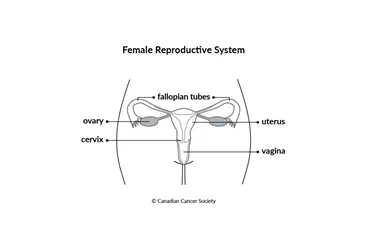The vagina
The vagina is a passageway that connects the cervix, which is the opening of the uterus, to the outside of the body. It is also known as the birth canal.

Structure
The vagina is an elastic, muscular tube about 7.5 to 9 cm long. It is located in the pelvis between the bladder and rectum. The vagina extends from the cervix to the vulva (the outer part of the genitals).
There are 3 layers in the wall of the vagina:
- The inner layer is made up of squamous cells. It’s called the mucosa. It is also called the epithelium.
- The middle layer is made up of muscle tissue. It’s called the muscularis.
- The outer layer is made up of connective tissue. It’s called the adventitia.
The vagina has many nerves, blood vessels and lymph vessels. Glands of the cervix and glands near the opening of the vagina secrete mucus to keep the mucosa moist.
The vaginal walls are usually collapsed and touch each other. The walls have many folds, which let the vagina expand during sex or vaginal childbirth.
Function
The vagina has 3 main functions:
- It provides a passageway for blood and mucosal tissue from the uterus to leave the body during a menstrual period.
- It's where the penis is inserted during vaginal sex and it holds sperm until they pass into the uterus.
- It provides a passageway for childbirth.
Your trusted source for accurate cancer information
With support from readers like you, we can continue to provide the highest quality cancer information for over 100 types of cancer.
We’re here to ensure easy access to accurate cancer information for you and the millions of people who visit this website every year. But we can’t do it alone.
Every donation helps fund reliable cancer information, compassionate support services and the most promising research. Please give today because every contribution counts. Thank you.
